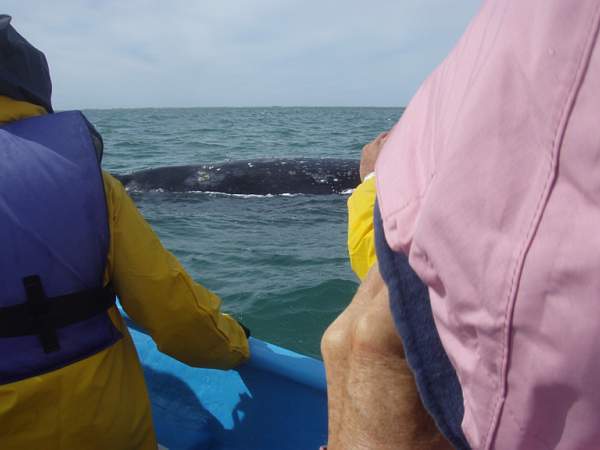Published in the Ocean Watch column, Honolulu Star-Advertiser © Susan Scott
February 6, 2009
SANTA ROSALIA, BAJA CALIFORNIA SUR, Mexico » Each year, around 20,000 gray whales migrate, round trip, an astonishing 12,000 miles between the Bering Sea and Mexico. These whales have such a friendly nature, some individual whales let people pet them.
And the species’ population recovery in the Pacific is complete. In 1993, gray whales were officially removed from the endangered species list.
For years now I’ve wanted to see these celebrated cetaceans, and now, on this voyage from Ensenada into the Sea of Cortez during the grays’ peak migration time, I thought my moment had come.
But it didn’t happen. Soon after I set out, I discovered that the GPS map I use for navigation didn’t show all the islands and exposed rocks along my route. This isn’t the GPS’ fault. The only charts available for this area were drawn in the 1800s and haven’t been updated. To be safe, I had to sail in deep water a couple of miles offshore.
Still, I thought we would spot some grays, but these whales swim in shallow water along the contour of the coast, and we were too far away to see them.
Gray whales like shallow water because they’re bottom feeders, eating little shrimplike creatures called amphipods and other bottom-dwelling crustaceans. To eat, the whale dives to the bottom, rolls to one side and, with its lower lip, sucks up invertebrates, water and mud. With its tongue, the animal then pushes out the silt and water through its sievelike baleen plates, leaving the good stuff inside. An old name for the gray whale is mussel-digger.
Just as most people are right-handed, most grays are right-lipped, usually eating with the right side of the mouth. A gray’s “sidedness” is visible. The favored lips are free of barnacles and have white scars from dragging over the ocean floor.
In the Sea of Cortez, we had good cruising guide sketch charts and were able to sail safely close to the Baja shoreline. Still, Craig and I only saw a couple of spouts and dark shapes in the far distance.
We couldn’t let this go. We decided to leave the boat in a marina here and travel overland to Bahia San Ignatio on the Pacific side of Baja. Each winter that lagoon hosts 200 to 350 female gray whales, nearly all of which give birth in early January. San Ignatio, one of three major nursery lagoons in Baja, supposedly has the friendliest whales.
After adventures with a late bus, an expensive taxi and a dusty van ride over washboard roads, we made it to the small whale-watch boat where we got soaking wet and freezing cold in 25-knot winds.
And it was worth it. Gray whale moms, big as buses, with month-old babies appeared near the boat almost continuously for nearly two hours. They didn’t come quite close enough to touch, but both females and offspring spy-hopped and rolled on their sides to see us.
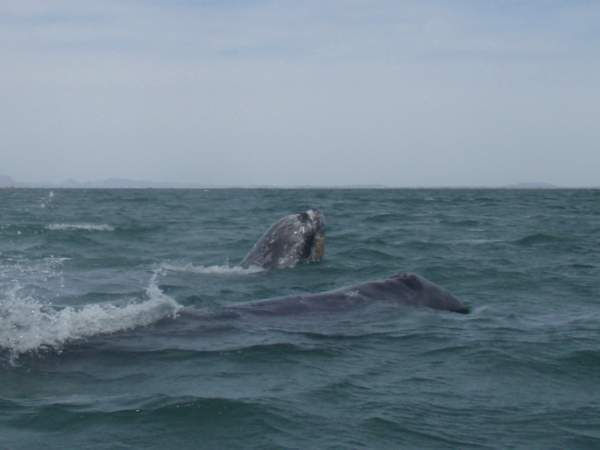 Female & Calf
Female & Calf
Looking into those expressive, humanlike eyes brought tears to my own eyes. To see these wild animals so unafraid and so internationally loved – four countries represented in our group alone – gives me hope for the world’s marine life. We humans and whales have come a long way in a short time.
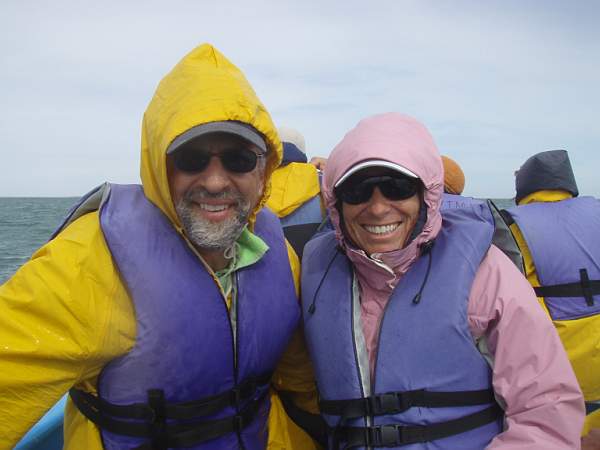
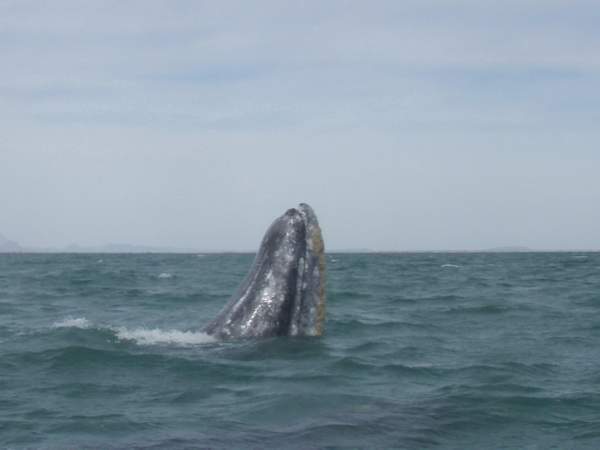 Gray Whale
Gray Whale
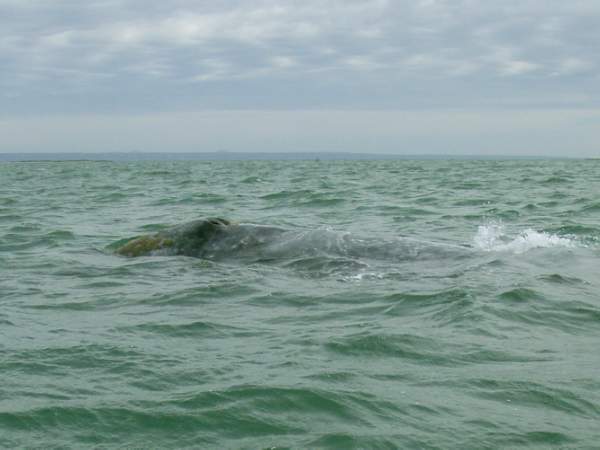
We’re back on our boat now preparing to sail across the Sea of Cortez. A little piece of my heart, though, will always be with the whales of Bahia San Ignatio.
